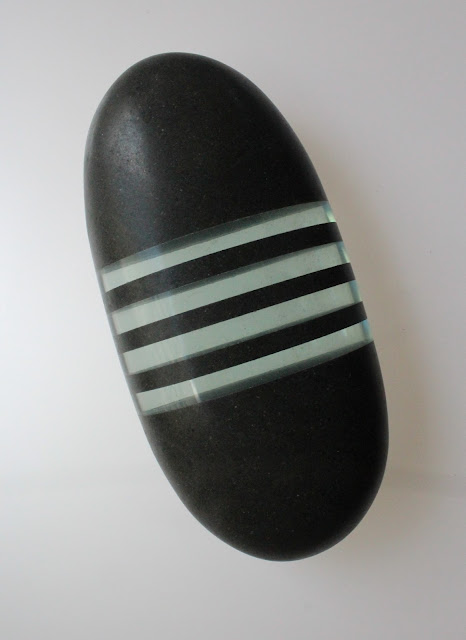Each year the Trust Board of the Auckland War Memorial Museum recognises individuals who have made significant contributions to museums in Aotearoa New Zealand.
I was one of four recipients recognised in 2017. I was delighted recently to attend a reception at the Museum to receive the award of Fellow of the Auckland War Memorial Museum. The medal was presented by Dr William Randall, Chairman of the Museum Trust Board, and Dr David Gaimster, the current Director of the Auckland War Memorial Museum. I was the Museum's Director from 1979 until 1993, which was the reason for the award.
That's great, Stuart, I am sure I can hear you say, but this is a New Zealand Glass Blog, not a place to show off awards, and that Medal is not glass.
You are right, of course, it's not glass, but there is a significant glass connection. The Auckland War Memorial Museum Medals are made by Auckland sculptor John Edgar ONZM, who has made 45 of these Medals over the past 23 years. They differ slightly from year to year. John tells me mine is made from black argillite or pakohe from Mokomoko Inlet and green
argillite from Green Hills. Both deposits are found in quarries on the road from
Invercargill to Bluff, quite close to each other. The engraved band around the edge is aluminium, and the Medal is set in a wooden case.
But no glass. The glass connection is in the wonderful series of similar medal forms, 'Coins of the Realm', that John Edgar has been creating for over 35 years. He began the series in 1982 and it is his stated intention 'to mint 1,000 distinct tokens for Aotearoa New Zealand'.
My Coin of the Realm, which I purchased in 1999, is number 607 in the series. The Coins differ from one another, much more so than the Medals. (You can see some of the variety on John's website at http://www.johnedgar.co.nz/coins/coins.html). My Coin is made from black Mokomoko Inlet argillite and grey-green greywacke from the Hauraki Gulf. A sliver of red glass separates the two rocks, which are bound by a copper band. A 'dawn' of red light shines between the darker hemispheres
In his sculpture John often contrasts the opaqueness and density of rock with the transparency and lightness of glass. Many of his works allow light to pass through the rock. This 'Calculus' or counting stone is one of John's series of 'altered pebbles'. I purchased it in the early 2000s. The greywacke pebble has been sliced, with slivers of glass inserted, so that something intrinsically dense and opaque has bands of light that pass through it. He has said that these pieces are his 'attempts to recombine that which has been divided, the transparent parting of the solid, seeing into the heart intact'.
I greatly enjoy these glass and stone sculptures, and I am now delighted to have an Auckland War Memorial Museum Medal to display with them.
 |
| Coin of the Realm #607, 1999 |
But no glass. The glass connection is in the wonderful series of similar medal forms, 'Coins of the Realm', that John Edgar has been creating for over 35 years. He began the series in 1982 and it is his stated intention 'to mint 1,000 distinct tokens for Aotearoa New Zealand'.
My Coin of the Realm, which I purchased in 1999, is number 607 in the series. The Coins differ from one another, much more so than the Medals. (You can see some of the variety on John's website at http://www.johnedgar.co.nz/coins/coins.html). My Coin is made from black Mokomoko Inlet argillite and grey-green greywacke from the Hauraki Gulf. A sliver of red glass separates the two rocks, which are bound by a copper band. A 'dawn' of red light shines between the darker hemispheres
In his sculpture John often contrasts the opaqueness and density of rock with the transparency and lightness of glass. Many of his works allow light to pass through the rock. This 'Calculus' or counting stone is one of John's series of 'altered pebbles'. I purchased it in the early 2000s. The greywacke pebble has been sliced, with slivers of glass inserted, so that something intrinsically dense and opaque has bands of light that pass through it. He has said that these pieces are his 'attempts to recombine that which has been divided, the transparent parting of the solid, seeing into the heart intact'.
I greatly enjoy these glass and stone sculptures, and I am now delighted to have an Auckland War Memorial Museum Medal to display with them.



